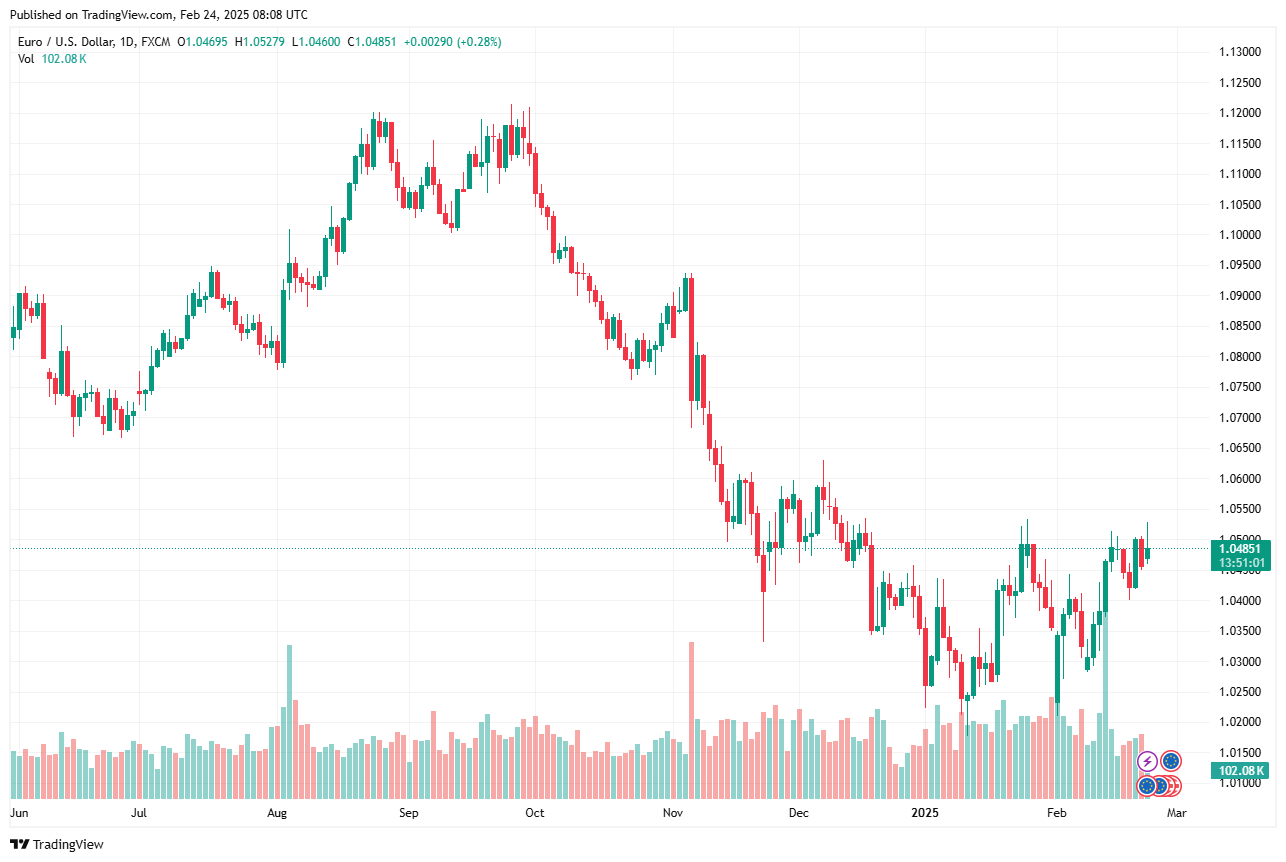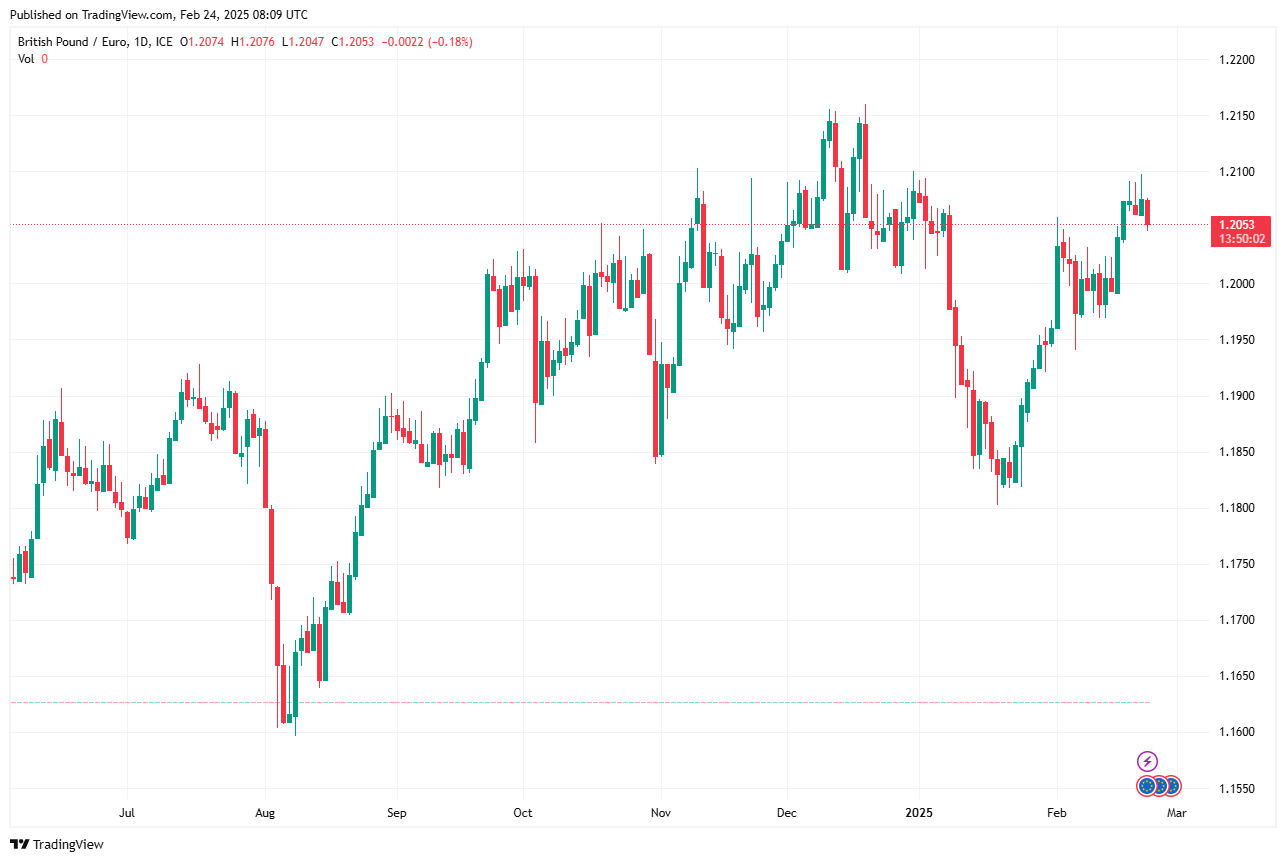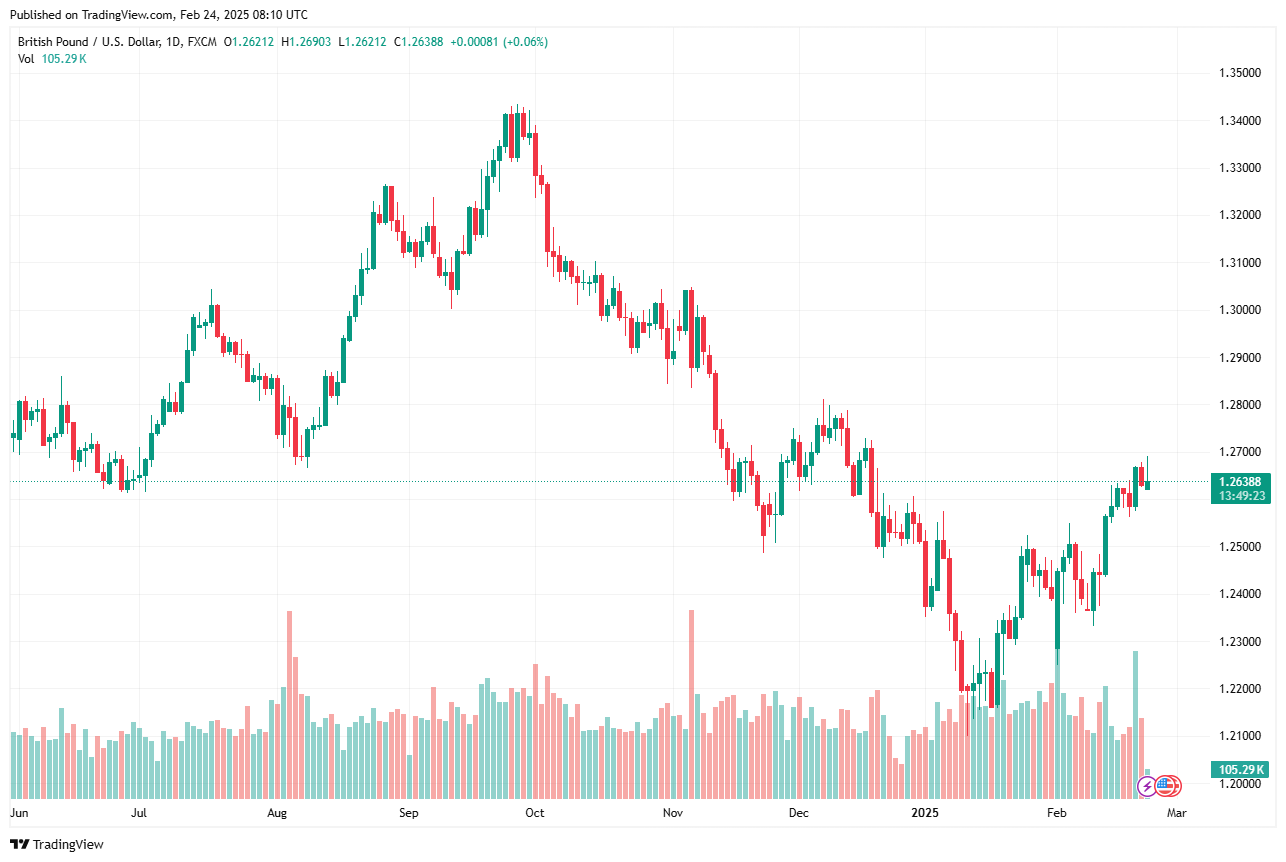EUR/USD: Euro Struggles as Monetary Policy Diverges
The euro is under sustained pressure against the US dollar, with forecasts suggesting EUR/USD could slip below parity this year. The primary driver behind this bearish outlook is the widening gap in monetary policy between the European Central Bank (ECB) and the US Federal Reserve. While markets anticipate some rate cuts from the Fed later in the year, the ECB is expected to ease policy more aggressively, with at least three rate reductions projected by mid-year.
Compounding the euro’s weakness is the sluggish economic performance in the eurozone. Recent data, including a sharp decline in France’s Purchasing Managers’ Index (PMI) to a 17-month low, underscores a persistent slowdown in manufacturing and services. This downturn fuels expectations of further ECB intervention, reinforcing downward pressure on the single currency. Additionally, uncertainty surrounding US trade policy under President Donald Trump has cast a shadow over European exports, adding another layer of risk for the euro.
Despite a recent pullback, the US dollar remains fundamentally supported by stronger economic growth and higher interest rate differentials. Robust US labour market data and consumer spending continue to underpin the greenback, further tilting capital flows in favour of US assets. As a result, EUR/USD looks set to remain under pressure in the coming months.

GBP/EUR: Sterling Holds Firm Despite German Political Developments
The pound maintains a bullish stance against the euro, although early-week movements may be influenced by the outcome of Germany’s latest elections. The centre-right CDU/CSU, led by Friedrich Merz, emerged victorious, but with limited leverage over its coalition partner, prospects for significant economic reforms remain uncertain. While the election result was broadly as expected, the absence of a far-right surge provided relief to markets, offering some temporary support to the euro.
Despite this, euro strength is likely to be capped as coalition negotiations progress, with a new government unlikely before April. This political limbo, combined with ongoing economic concerns in the eurozone, suggests any post-election gains for the euro may be short-lived. The pound’s recent dip to 1.2050 against the euro could see further declines towards 1.2020 or even 1.20 in the early part of the week, though these levels may attract dip buyers.
Looking ahead, attention turns to key speeches from Bank of England (BoE) policymakers, including Deputy Governor Clare Lombardelli and Chief Economist Huw Pill. With market expectations for rate cuts fluctuating, any dovish rhetoric from BoE officials could weigh on sterling. However, the broader outlook remains constructive, with GBP/EUR potentially revisiting last week’s high of 1.2097 before the week is out.

GBP/USD: Sterling Strengthens as Dollar Momentum Eases
The pound surged to a two-month high against the US dollar, with GBP/USD climbing above 1.2600. A third consecutive weekly decline for the greenback helped fuel the pair’s rally, as investors remained unconvinced by the Federal Reserve’s hawkish stance. While the Fed minutes reiterated a cautious approach to rate cuts, softening US economic data, including a weaker-than-expected PMI reading, dampened dollar demand.
Adding to the market uncertainty, geopolitical tensions escalated as the US excluded Ukraine and the EU from peace negotiations with Russia, prompting concerns over Europe’s strategic position. However, these developments failed to provide the expected boost to the dollar, with investors instead turning to gold and equities as safe-haven assets.
In the UK, stronger inflation and labour market data supported the pound, despite expectations of BoE rate cuts later this year. Retail sales rebounded sharply in January, while inflation surprised to the upside at 3%, reinforcing the argument that the BoE may proceed cautiously with rate reductions. With a relatively light data calendar for the UK this week, focus will remain on BoE and Fed speeches, along with key US economic releases, including GDP and PCE inflation data, which could provide further direction for GBP/USD.







